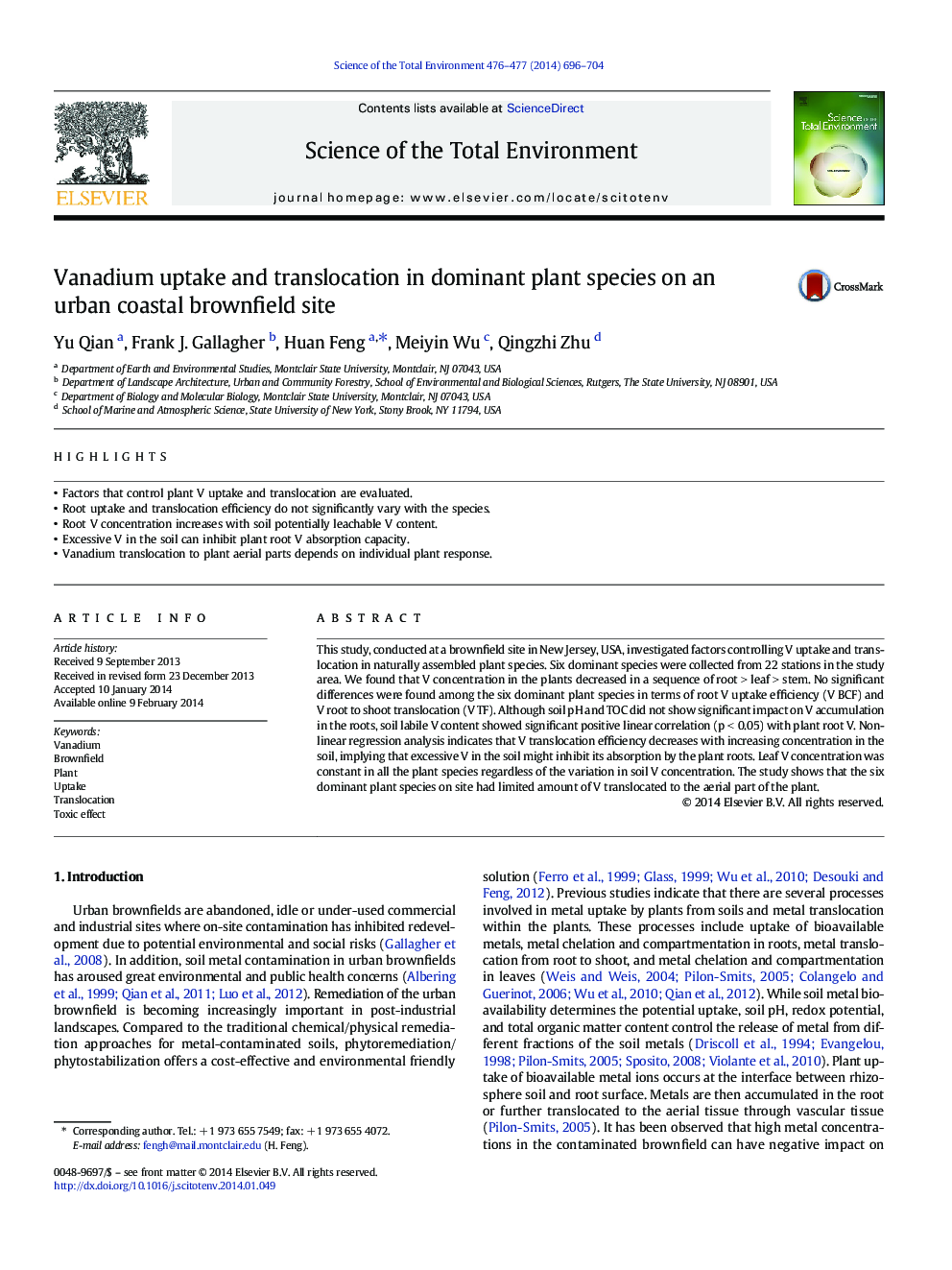| Article ID | Journal | Published Year | Pages | File Type |
|---|---|---|---|---|
| 4428584 | Science of The Total Environment | 2014 | 9 Pages |
•Factors that control plant V uptake and translocation are evaluated.•Root uptake and translocation efficiency do not significantly vary with the species.•Root V concentration increases with soil potentially leachable V content.•Excessive V in the soil can inhibit plant root V absorption capacity.•Vanadium translocation to plant aerial parts depends on individual plant response.
This study, conducted at a brownfield site in New Jersey, USA, investigated factors controlling V uptake and translocation in naturally assembled plant species. Six dominant species were collected from 22 stations in the study area. We found that V concentration in the plants decreased in a sequence of root > leaf > stem. No significant differences were found among the six dominant plant species in terms of root V uptake efficiency (V BCF) and V root to shoot translocation (V TF). Although soil pH and TOC did not show significant impact on V accumulation in the roots, soil labile V content showed significant positive linear correlation (p < 0.05) with plant root V. Non-linear regression analysis indicates that V translocation efficiency decreases with increasing concentration in the soil, implying that excessive V in the soil might inhibit its absorption by the plant roots. Leaf V concentration was constant in all the plant species regardless of the variation in soil V concentration. The study shows that the six dominant plant species on site had limited amount of V translocated to the aerial part of the plant.
